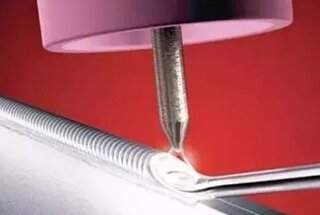
Why is welding high manganese steel a challenge even for experienced welders? This material, known for its toughness and work-hardening properties, demands specific techniques to avoid issues like brittleness and cracks. This article guides you through the necessary steps and precautions, ensuring durable and strong welds. Expect to learn about the best practices, suitable welding rods, and essential cooling methods to master this tricky material.

High manganese steel is an alloy steel with a manganese content greater than 10%. After solution treatment, a small amount of carbide is left undissolved in high manganese steel. When the quantity is small and meets inspection standards, it can still be used.
In addition to carbon, manganese, silicon, sulfur, and phosphorus, high manganese steel is also alloyed with nickel, titanium, chromium, vanadium, molybdenum, and niobium to enhance its performance.
Common types of high manganese steel include ZGMn13-1, ZGMn13-2, ZGMn13-3, ZGMn13-4, and others. By heating high manganese steel within a range of 1000 to 1100°C, a single austenite structure can be obtained.

The steel retains its austenite structure and has high toughness after rapid quenching in water (also known as water toughening treatment). Its hardness is quite low (170-230HB), which allows it to undergo plastic deformation when its surface is impacted.
As a result of deformation strengthening, work hardening occurs in the deformed layer of the metal, significantly increasing the surface layer’s hardness (500-600HB). With increasing depth from the metal surface, the hardness gradually decreases.
Typically, the hardened layer thickness is around 10-20mm. As high manganese steel parts continue to wear during use, the hardened layer also extends inward under the continuous impact of external loads, maintaining a stable thickness.
It should be noted that high manganese steel is not wear-resistant under static conditions, it only develops wear-resistance when it is continuously impacted by external loads, forming a hardened layer.
The transition temperature of high manganese steel is -40°C. In industrial production, it is mainly used to make the front wall of large excavator buckets, bucket teeth, support wheels, and wear-resistant plates for crushers.
Welding rods used in arc welding of high manganese steel include high manganese steel core rods, alloy steel core rods, and low carbon steel core rods. Welding rods made with a high manganese steel core are only used for repairing high manganese steel components and are rarely used in production today.
Alloy steel core rods, generally made from Cr-Ni alloy steel, offer better repair quality but are more costly. These are typically used for the first layer and as barrier layers.
Low carbon steel core rods come in two types: one is high manganese steel type rods, such as D256 (Mn13), D266 (Mn13Mo), mainly used for parts of high manganese steel subject to severe impact and abrasive wear.
The other is Cr-Mn type rods, like D276 and D277 (2Mn12Cr13Mo). Their deposited metal is high manganese austenite which transforms to martensite under strong impact.
Because of the high chromium content in these rods, the post-welding metal has good corrosion resistance. These rods are mainly used for corrosion-resistant surfacing and surfacing of high manganese steel, such as hydro turbine blades and excavator bucket teeth.
Welding wires used for high manganese steel welding mainly include high manganese steel welding wire and alloy steel welding wire.
Welding wire with a phosphorus content less than 0.03% can be used for component welding and repair; wire with a phosphorus content greater than 0.03% is only used for repair work.
High manganese steel welding wire series include Mn-Ni, Mn-Cr, Mn-Mo, Mn-Ni-Cr; alloy steel welding wire series include Cr-Ni, Cr-Ni-Mo. These types of welding wires offer high corrosion resistance and can quickly form a hardened layer under impact.
Cr-Ni alloy steel welding wire can also be used for welding joints of dissimilar steels, such as high manganese steel to carbon steel or low alloy steel.
Whether surfacing, repairing or butt welding, high manganese steel has poor weldability, mainly because the welding heat affected zone can cause brittleness (due to carbide precipitation during welding) and thermal cracks can form on the weld seam (due to excessive phosphorus and sulfur in high manganese steel, and the coefficient of expansion and thermal conductivity causing crystalline cracks and liquation cracks).
During welding operations, the following should be noted: defects and surrounding hardened layers should be completely removed by grinding or air carbon arc gouging. Castings defects should undergo water toughening treatment before welding to prevent cracking.
Interlayer temperature control is crucial; before surfacing or repairing high manganese steel, preheating is not required. Lower line energy should be used, and the interlayer temperature should be below 50°C to prevent the precipitation of excessive carbide in the heat-affected zone leading to brittleness.
Intermittent welding or short-segment welding methods can minimize the heat on the base material, avoiding overheating and embrittlement in the heat affected zone. Immersed welding, where the backside of the weld is immersed in water during welding, can accelerate cooling.
Compared with non-immersed welding processes, immersed welding reduces carbide precipitation and prevents the formation of hot cracks. Post-weld hammering of the weld can help alleviate welding stress and avoid crack formation.
When surfacing high manganese steel on carbon steel or low alloy steel, a transition layer should be deposited first to prevent martensite structures from appearing in the transition zone (or incomplete fusion zone) due to a decrease in manganese content, which could lead to cracks or peeling along the fusion line.
Therefore, a transition layer of Cr-Ni austenitic stainless steel should be deposited first on the carbon steel or low alloy steel. This transition layer can achieve good fusion with both the carbon or low alloy steel and the high manganese steel, without forming brittle structures, thus preventing crack formation.
In summary, aside from ensuring the selected welding current, arc voltage, and welding speed can guarantee proper weld formation and good fusion, cooling speed of the workpiece should be primarily considered during the welding process.








